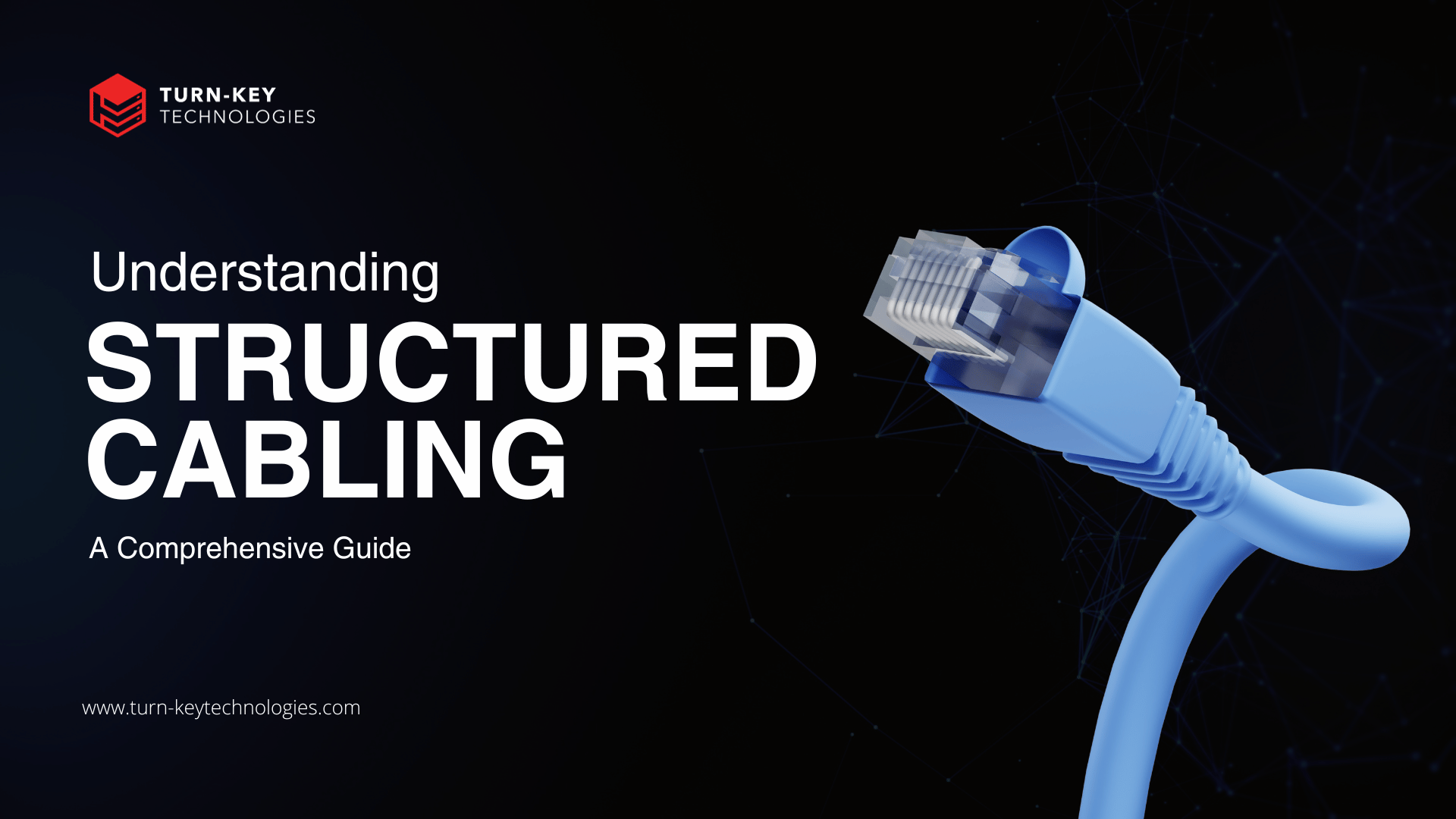5 min read
Structured Cabling Upgrade Budget & ROI Planning
Is your business network starting to feel like a bottleneck? As data demands grow, an outdated network infrastructure can lead to slow file...
4 min read
 Kevin Murphy
:
Aug 4, 2025 4:51:30 PM
Kevin Murphy
:
Aug 4, 2025 4:51:30 PM
One bad decision during cabling installation can leave an entire building with unreliable network infrastructure for years.
Cabling infrastructure problems lead to costly rewiring, code violations, and daily disruptions that no IT team wants to deal with. According to MarketsandMarkets, the structured cabling market is expected to exceed $15 billion by 2027, which makes one thing clear: organizations are investing heavily in getting this right.
If you're planning a network installation for a school, office, or facility, you need a structured cabling checklist that eliminates guesswork. The checklist that follows is built from real-world planning and professional installation experience. It ensures your structured cabling system is designed, installed, and documented to support a high-performance network, without surprises later.
Walk the entire site and evaluate the current network setup. Look for outdated data cables, overloaded switch closets, and unsupported devices that could cause performance issues. Older buildings often hide non-compliant installations that need replacing. A thorough inspection prevents these problems from affecting your new structured cabling system.
Clarify exactly what the network must support, including voice and data cabling, intercom cabling, security systems, and wireless access points. Account for expected growth in devices, bandwidth, and physical layout changes. Planning for future cabling needs now avoids costly rework later.
Use floor plans to lay out horizontal and vertical cabling paths. Identify telecom rooms, workstations, and entrance facilities, and route cables around obstructions like HVAC or lighting. Finalize the scope with IT, facilities, and any installation company to prevent scope creep or missed requirements during the installation process.
Choose cables that meet both current and anticipated network demands. Category 6 or higher copper cabling, fiber optic cabling, and low-voltage structured cabling all have specific roles depending on the network design. Select components that comply with TIA/EIA and NEC standards to avoid failed inspections and ensure compatibility with your network equipment.
Every cable should follow a defined path and avoid sharp bends, electrical interference, or tight bundling. Horizontal cabling should be routed cleanly through cable trays or conduits, and backbone cabling should terminate in well-ventilated telecom rooms. Skip shortcuts—rushed cabling installations often lead to poor performance or signal degradation. Structured cabling installation should be handled by professionals who follow a clearly defined installation process.
Build in flexibility using patch panels, wall-mounted consolidation points, and modular faceplates. Run extra network cables to anticipated future locations during the initial install. A few more cables today prevent major disruptions and rewiring tomorrow.
Clear labeling is critical to avoid confusion during troubleshooting, upgrades, or network expansion. Every Ethernet cable, patch panel, and port should be labeled using a consistent naming scheme that reflects location and function. In large installations, unlabeled or mismatched cables slow down maintenance and create long-term risks to network performance.
Maintain detailed documentation of the entire structured cabling infrastructure. Include rack elevations, port assignments, cable types, and connection points. These records should reflect the actual layout of the local network, not just the initial plan. Without this level of documentation, even simple tasks like identifying a single point-to-point cabling route or replacing a cable can waste time and money.
Once the installation project is complete, update all documentation to reflect the final cabling network. These "as-built" drawings and records become critical references for ongoing maintenance, network upgrades, and compliance checks. They also ensure that whoever inherits the system—whether another IT director or a structured cabling company—can quickly understand the setup without guesswork.
Choose a structured cabling solution that supports increasing data rates and bandwidth requirements. Fiber optic lines and Cat6A copper cables help maintain consistent network speeds as users and devices increase. Leave room for more network devices and new technologies like Wi-Fi 6 or PoE++ that place higher demands on your infrastructure.
During the initial installation, include spare cabling and unused ports to handle future expansion without disruption. Running additional cable now is cheaper than pulling it later. Extra vertical cabling between floors, or additional horizontal cabling to workstations, saves time and avoids future downtime.
Meet all structured cabling standards, including ANSI/TIA-568 and ISO/IEC guidelines, to ensure compatibility and performance. As your network evolves, schedule periodic reviews of the cabling infrastructure. This helps identify bottlenecks, aging components, or layout changes that require updated cabling solutions.
A structured cabling system only performs as well as the planning behind it. Rushed installs, vague documentation, and mismatched components all lead to recurring outages and costly troubleshooting. Clear planning and precision at every stage—layout, labeling, documentation—are what ensure long-term performance and compliance.
If you're preparing for a network upgrade or new installation, download our structured cabling checklist and use it as a step-by-step reference to guide every part of your installation process.
For a deeper look at how structured cabling systems work, explore our complete Guide to Structured Cabling Installation. It tackles the basics and components of structured cabling systems, types to choose from, installation best practices, and how to future-proof your network.
Have questions or need a custom solution? Contact our specialists to speak with a professional who can help you get network cabling installation right from day one.
With over 25 years of experience, 30+ professional certifications, and more than 1,000 satisfied clients served, Turn-key Technologies, Inc. (TTI) has become a trusted name in structured cabling and network solutions. As the Times Union Center shares: “No matter what the project, venue, or required solution we have sought, we have found a true partner in TTI. They continue to provide well-designed, budget-conscious solutions in line with our needs.” Our commitment to performance, reliability, and long-term value continues to earn the trust of facilities across industries.

Kevin has been with Turn-key Technologies since 2012, overseeing cabling teams and managing projects from concept to completion. With deep expertise in structured cabling installations—including fiber optics, Cat5/5e/6/6a, and coax systems—he works closely with clients and engineers to deliver reliable, high-quality solutions on time and on budget.
Certifications:
NJ Division of Consumer Affairs
• Uniform & Construction Code
• Residential Fire Alarm Systems
• Smoke Detection Systems
• NJ Barrier Free Subcode
• ADA & Licensing Law
NYS Licenses
• Security & Fire Alarm License
• Electrical Training Center Fire Alarm Certification
BICSI & Technical
• Designing for PoE Lighting
• Fiber Optic & Connector Termination
• Firestop 101
Other Certifications
• OSHA 30-Hour Construction Safety
• Verkada Certified Engineer
• Avigilon Access Control Manager 6

5 min read
Is your business network starting to feel like a bottleneck? As data demands grow, an outdated network infrastructure can lead to slow file...

Networks scale fast, and cabling choices shape reliability, speed, and future costs. This guide explains the essentials—components, installation...

Your school district or library has just invested in a network infrastructure upgrade. The new cabling installation is complete, and now the critical...